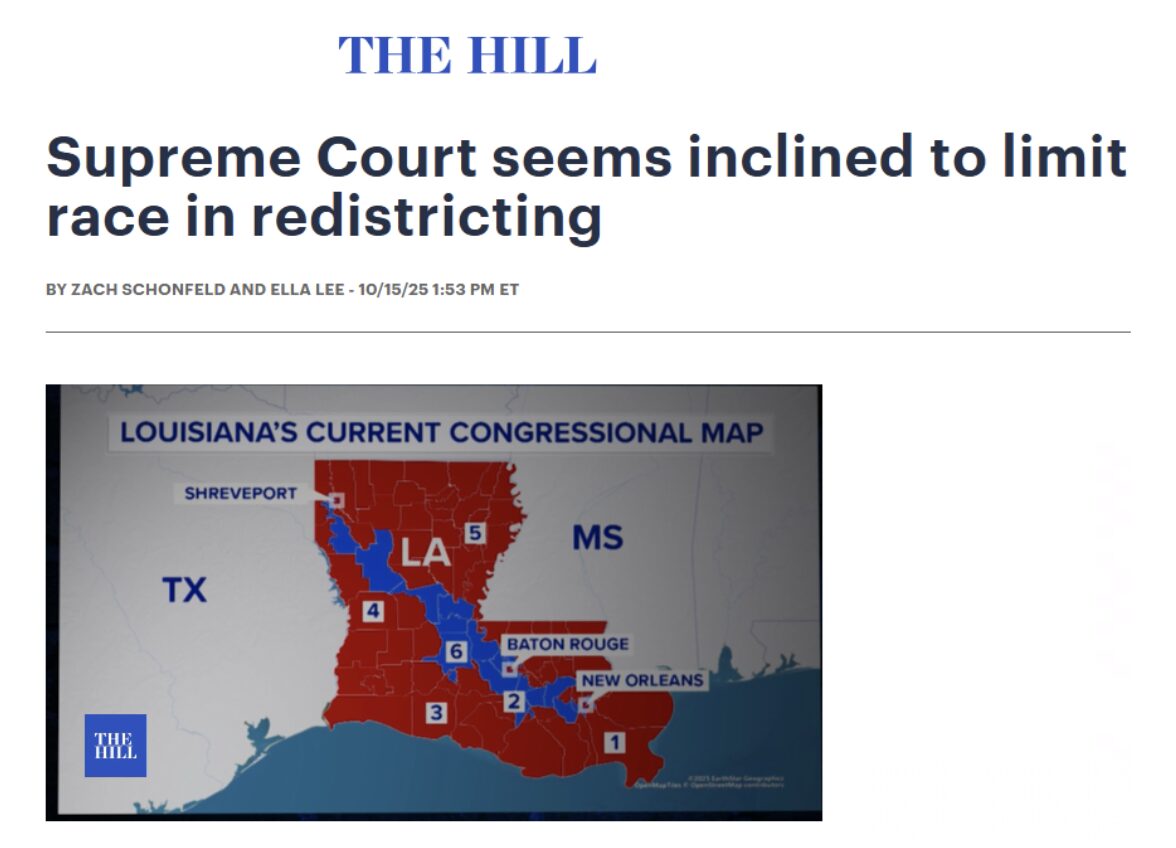On Wednesday, the Supreme Court heard a Louisiana case that could determine if racial gerrymandering is finally declared unconstitutional and given an appropriate burial.
The case, Louisiana v. Callais, involves a Congressional map that was drawn in 2024 to create a second majority-Black district in the state. It snakes across the state for 250 miles, ignoring common sense, and is at times barely contiguous. See map below
If the court finds against the tortured lines of the district on the grounds that it impermissibly allows the use of race in policy decisions, it could have a profound impact in the drawing of Congressional district lines.
In 2021, Chief Justice John Roberts and Justice Brett Kavanaugh joined the court’s three liberals in ruling not to strike down lines drawn along racial lines.
But now, both sound much more skeptical. “This Court’s cases, in a variety of contexts, have said that race-based remedies are permissible for a period of time — sometimes for a long period of time, decades in some cases — but that they should not be indefinite and should have a end point,” Kavanaugh said in this week’s oral argument.
It’s been 60 years since the Voting Rights Act was passed. Today, there are 15 black members of Congress representing districts that are majority white. Today, it is the government, not voters who are obsessed with skin color.
It’s time to end racial districting even though the foolish strategy of packing all the minorities into one or two districts often costs the Left seats in Congress.

